Abstract
1 Mice in small groups develop a despotic type of social hierarchy, a feature of which is to resist alteration through the medium of psychotropic drugs. This makes a rapid pharmacologically induced change in the social hierarchy impossible. 2 Patrolling the territory and a certain level of social interaction are both critical factors in maintaining the phenomenon of inertia in the social hierarchy. Psychotropic drugs (diazepam, droperidol and mescaline) altered both these factors to a varying degree and also displayed a differing ability to maintain the inertia of the social hierarchy. 3 A drug-induced alteration in the level of aggression in a subordinate mouse in a group of three does not cause an alteration in its social position. 4 Chronic administration of diazepam, droperidol or mescaline, all of which alter the level of aggression in different ways, can result in an inversion of the social hierarchy where a competitive rival is present in the group of mice. The rate of inversion of the social hierarchy depends on the type of pre-existing social hierarchy. 5 It is suggested that the ability of psychotropic drugs to maintain the inertia of the hierarchy be used as an index of their effect upon certain types of species-specific behaviour; in particular aggression.
Full text
PDF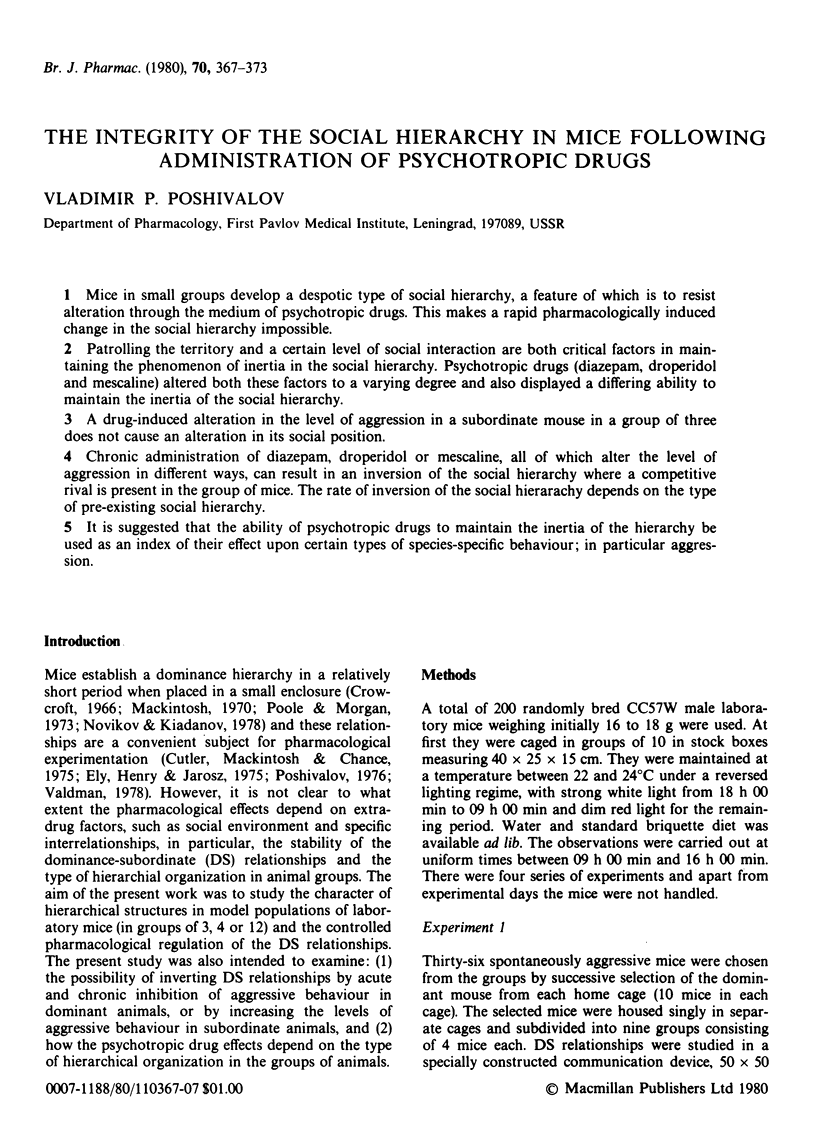
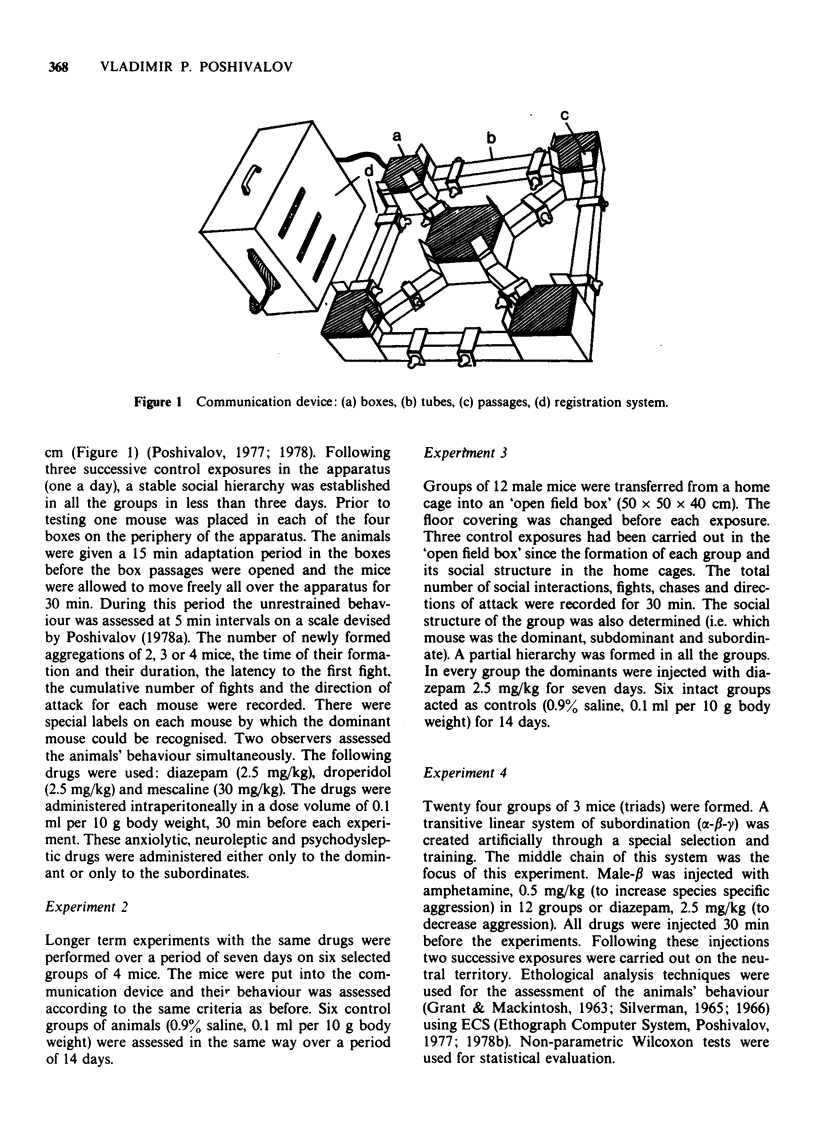
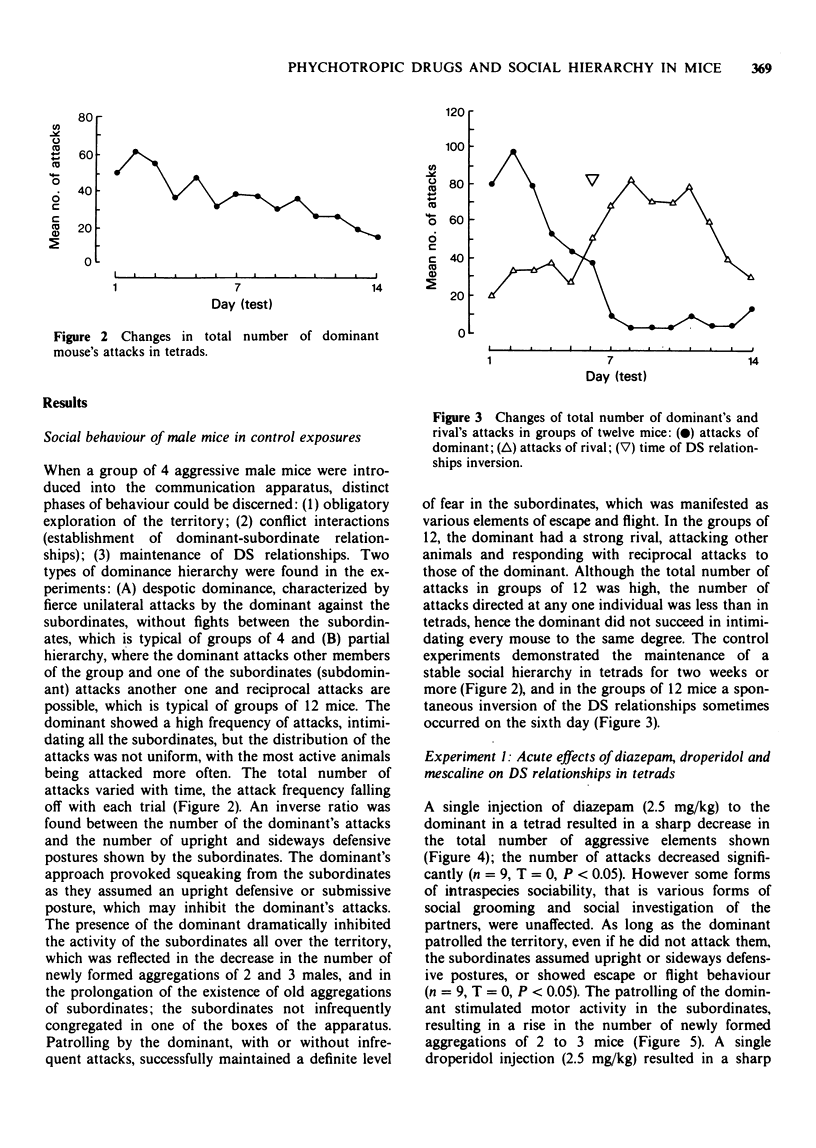
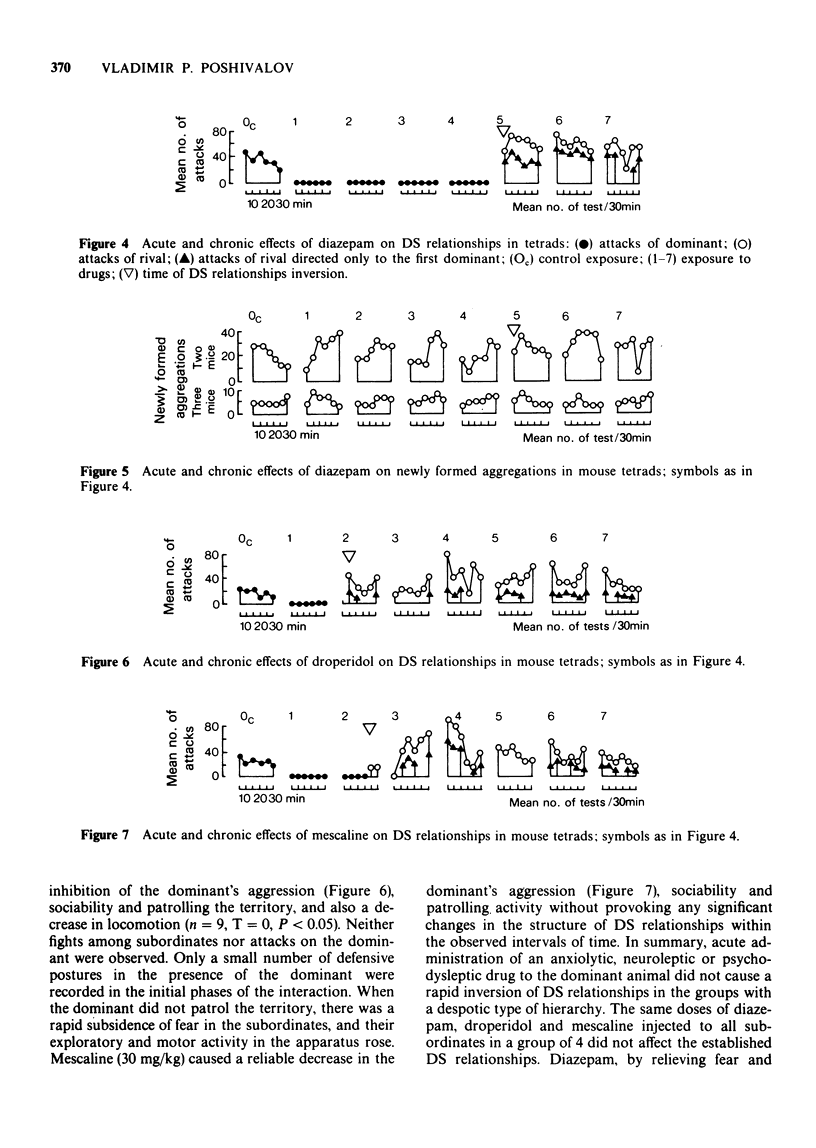
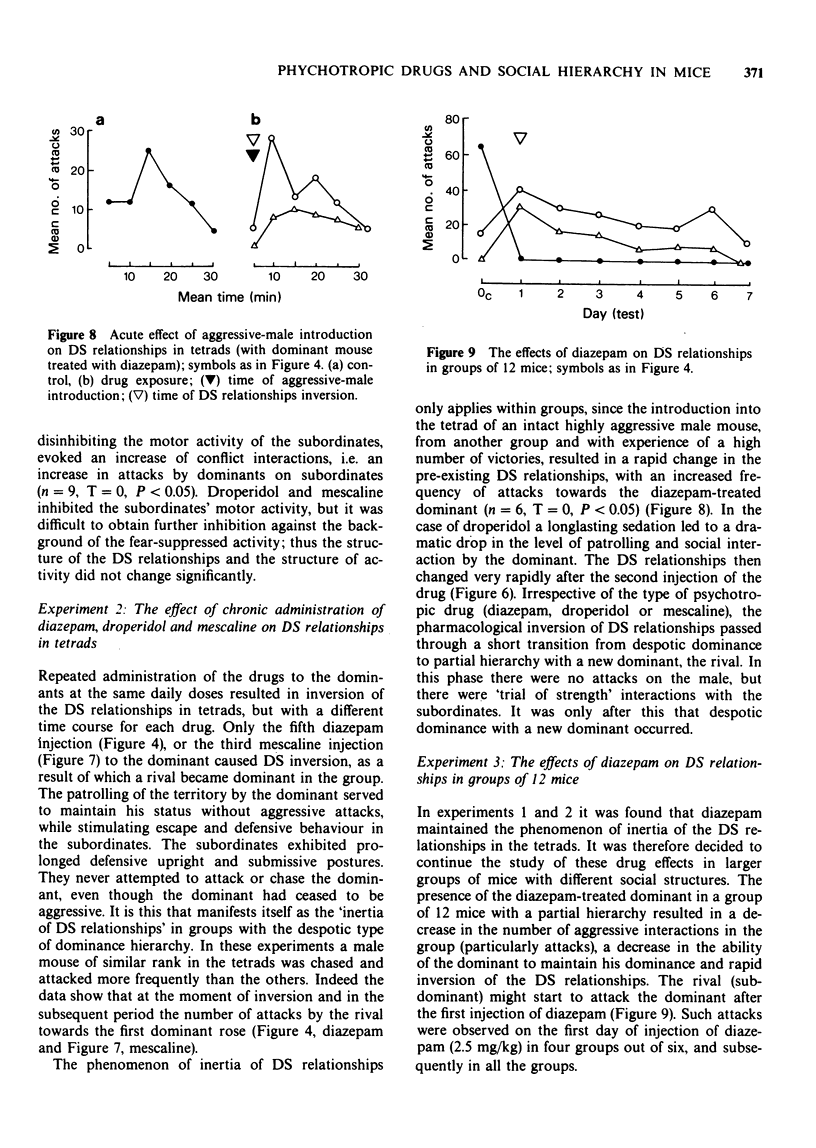

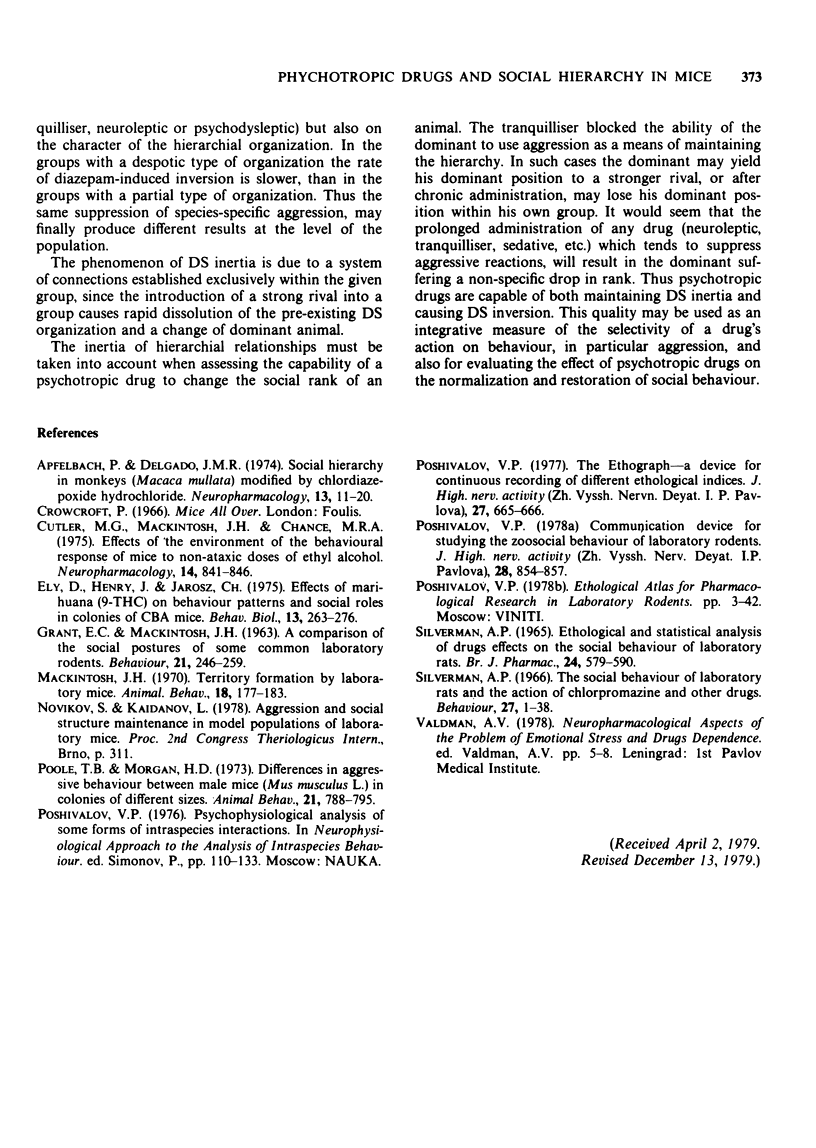
Selected References
These references are in PubMed. This may not be the complete list of references from this article.
- Apfelbach R., Delgado J. M. Social hierarchy in monkeys (Macaca mulatta) modified by chlordiazepoxide hydrochloride. Neuropharmacology. 1974 Jan;13(1):11–20. doi: 10.1016/0028-3908(74)90003-3. [DOI] [PubMed] [Google Scholar]
- Cutler M. G., Mackintosh J. H., Chance M. R. Effects of the environment on the behavioural response of mice to non-ataxic doses of ethyl alcohol. Neuropharmacology. 1975 Nov;14(11):841–846. doi: 10.1016/0028-3908(75)90112-4. [DOI] [PubMed] [Google Scholar]
- Ely D. L., Henry J. P., Jarosz C. J. Effects of marihuana (delta9-THC) on behavior patterns and social roles in colonies of CBA mice. Behav Biol. 1975 Mar;13(3):263–276. doi: 10.1016/s0091-6773(75)91290-0. [DOI] [PubMed] [Google Scholar]
- Poole T. B., Morgan H. D. Differences in aggressive behaviour between male mice (Mus musculus L.) in colonies of different sizes. Anim Behav. 1973 Nov;21(4):788–795. doi: 10.1016/s0003-3472(73)80105-8. [DOI] [PubMed] [Google Scholar]
- SILVERMAN A. P. ETHOLOGICAL AND STATISTICAL ANALYSIS OF DRUG EFFECTS ON THE SOCIAL BEHAVIOUR OF LABORATORY RATS. Br J Pharmacol Chemother. 1965 Apr;24:579–590. doi: 10.1111/j.1476-5381.1965.tb01749.x. [DOI] [PMC free article] [PubMed] [Google Scholar]
- Silverman A. P. The social behaviour of laboratory rats and the action of chlorpromazine and other drugs. Behaviour. 1966;27(1):1–38. doi: 10.1163/156853966x00083. [DOI] [PubMed] [Google Scholar]


